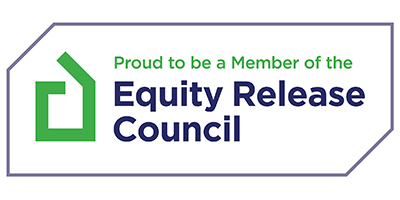In this article
Bridging loans offer a flexible solution for those needing short-term financial support.
Typically utilised to cover the interim period between buying a new property and selling an existing one, these loans are not limited to property transactions alone.
From urgent property repairs to business opportunities that require quick capital, bridging loans can be used for a range of purposes.
This article will look into the diverse applications of bridging loans, providing clarity on how they can be a valuable asset in various financial scenarios.
Bridging Loans
Explained in 57 seconds
Find more videos like this on MoneymanTV
Bridging Loans for Property Purchases
Bridging the Gap Between Sales and Purchases
One of the most common uses for a bridging loan is to facilitate property transactions.
If you are purchasing a new home but have not yet sold your existing property, a bridging loan to buy a house can provide the necessary funds to secure the new property.
This ensures you don’t miss out on your dream home while waiting for your current property to sell.
Financing Auction Purchases
Property auctions often require buyers to complete the purchase within a tight timeframe, typically 28 days.
A bridging loan for auction properties can provide the quick financing needed to meet these deadlines, allowing you to take advantage of auction opportunities without worrying about immediate funding.
Renovation and Development Projects
Home Renovations
If you plan to renovate your home to increase its value or improve living conditions, a bridging loan can cover the renovation costs.
This is especially useful if you are waiting for other funding sources or planning to sell the property at a higher price post-renovation.
This product is known as a refurbishment bridging loan or a renovation mortgage.
Property Development
For property developers, bridging loans offer a way to finance construction and development projects.
Whether it’s converting a property, building new structures, or undertaking extensive refurbishments, bridging loans provide the capital required to get projects off the ground and ensure smooth progress until longer-term financing is secured.
This product is known as development finance.
Business Purposes
Seizing Investment Opportunities
In the business world, opportunities can arise suddenly and may require immediate action.
Whether it’s acquiring new equipment, expanding operations, or taking advantage of a lucrative investment, a bridging loan can also offer the quick capital needed to capitalise on these opportunities without delay.
Speak to an Advisor – It’s Free!
Schedule a free callback from one of our experts today.
- All situations considered
- Transparent and honest mortgage advice
- We search 1000s of purchase and remortgage deals
Our customers rate us 4.9/5
Personal Financial Needs
Covering Unexpected Expenses
Life can present unexpected financial challenges, such as medical emergencies or urgent repairs.
Bridging finance can sometimes be used to provide the funds required to handle these unforeseen expenses, offering a safety net when you need it most.
Preventing Repossession
If you are at risk of property repossession due to mortgage arrears, a bridging loan may be able to help you pay off the outstanding amount and give you the breathing space to arrange a more permanent financial solution, thereby protecting your home from repossession.
Property Portfolio Management
Buy-to-Let Investments
For buy-to-let investors, bridging loans can be used to quickly acquire rental properties, refurbish them, and make them tenant-ready.
This enables investors to expand their property portfolio and generate rental income without waiting for lengthy mortgage approvals.
Portfolio Restructuring
Investors managing multiple properties might need to restructure their portfolios, sell underperforming assets, or refinance existing properties.
Bridging loans provide the flexibility and quick access to funds required for these strategic moves.
Advantages of Bridging Loans
Speed and Flexibility
One of the main advantages of bridging loans is their speed.
Unlike traditional mortgages, which can take months to approve, bridging loans can be arranged in a matter of days.
This rapid turnaround is crucial in situations where time is of the essence.
Flexible Repayment Terms
Bridging loans offer flexible repayment terms, typically ranging from a few weeks to 12 months.
This allows borrowers to tailor the loan duration to their specific needs and circumstances, making it a highly adaptable financing option.
No Long-Term Commitment
Since bridging loans are short-term by nature, they do not require a long-term commitment from the borrower.
This can be particularly beneficial for those who anticipate securing permanent financing or receiving a large sum of money soon.
Considerations Before Taking Out a Bridging Loan
Higher Interest Rates
It’s important to note that bridging loans usually come with higher interest rates compared to traditional mortgages. This is due to the short-term nature and the higher risk for lenders.
Borrowers should carefully assess their ability to repay the loan within the agreed timeframe to avoid financial strain.
Exit Strategy
Having a clear exit strategy is crucial when taking out a bridging loan.
This could be selling a property, refinancing with a traditional mortgage, or receiving a significant cash inflow from another source.
A well-defined exit plan ensures that the loan is repaid on time and avoids potential financial difficulties.
If you decide to use a mortgage broker like us, they can sort this out for you on your behalf.







